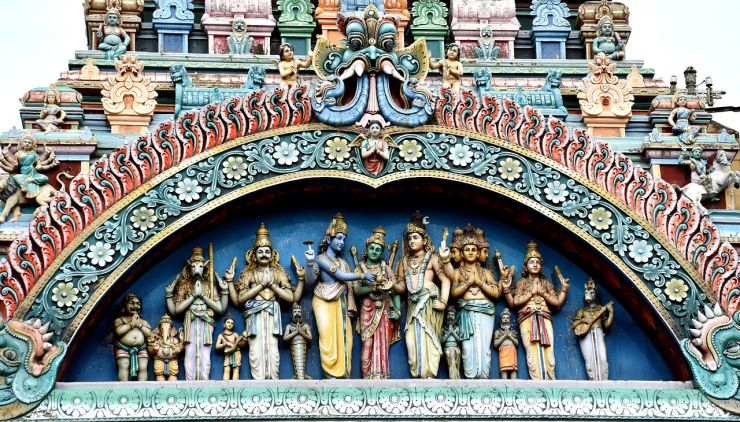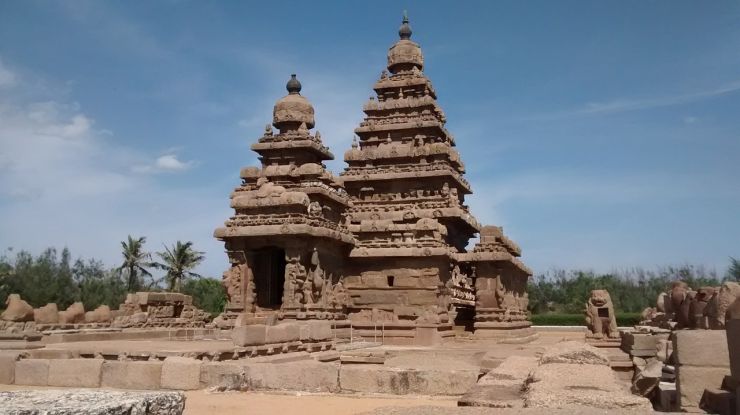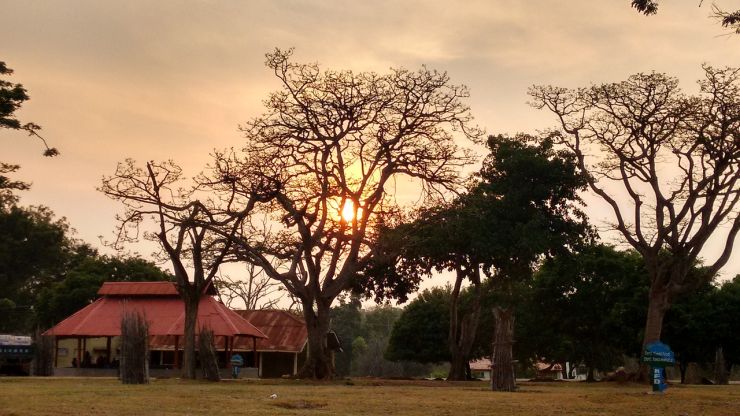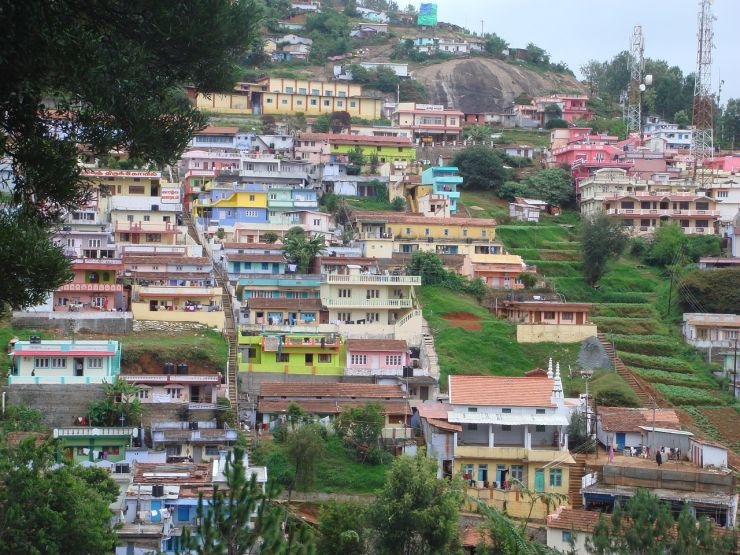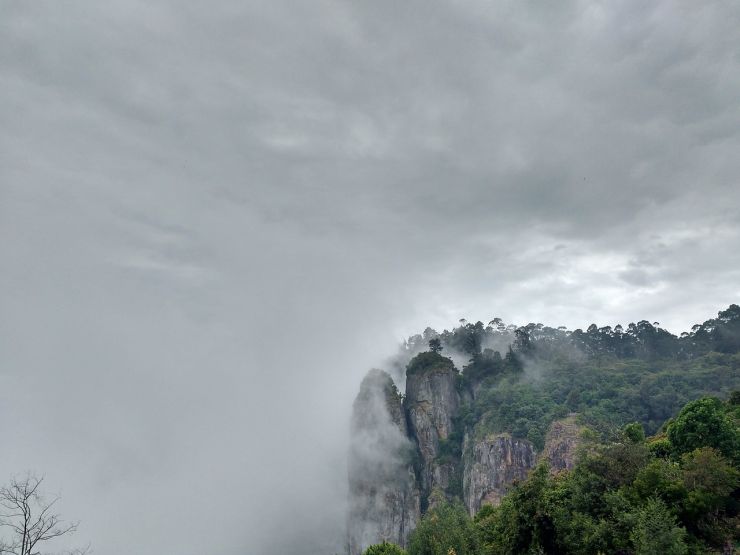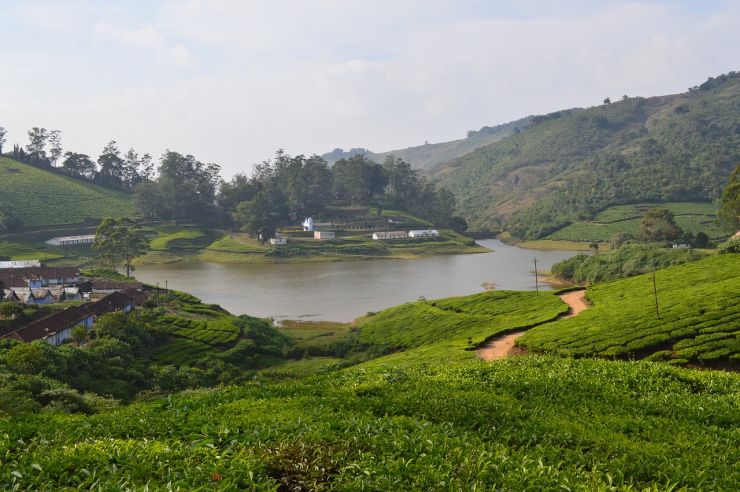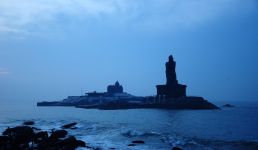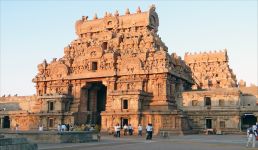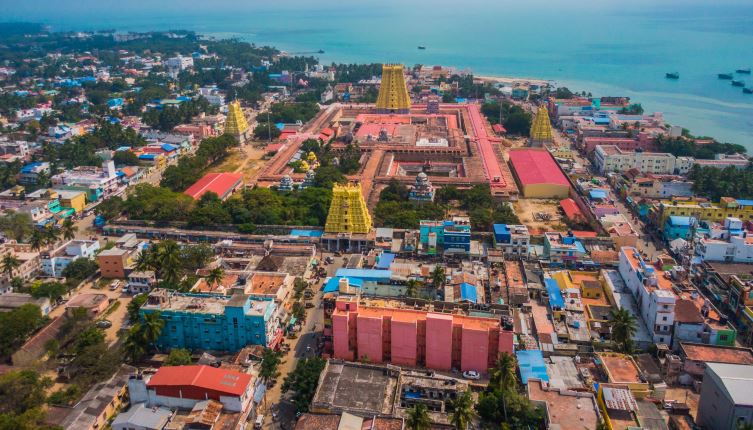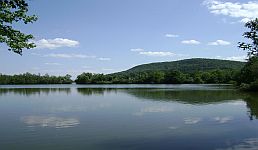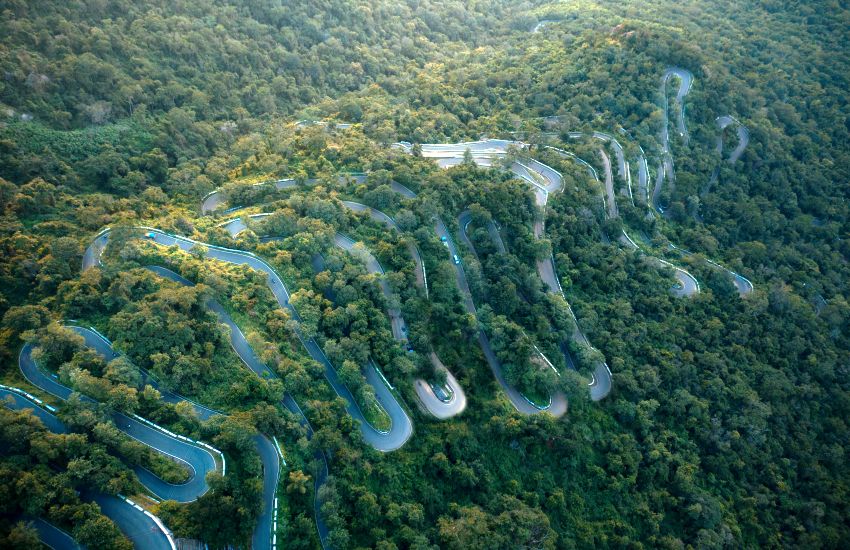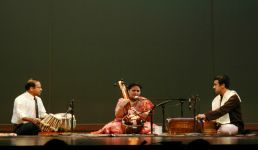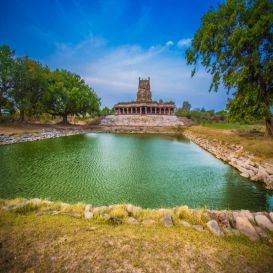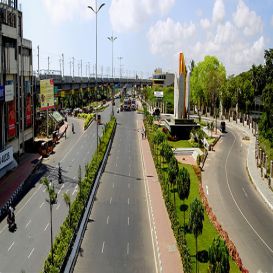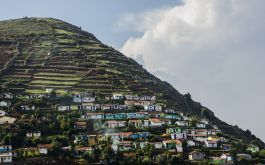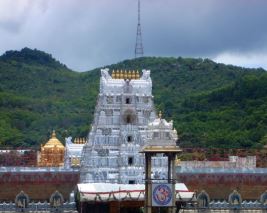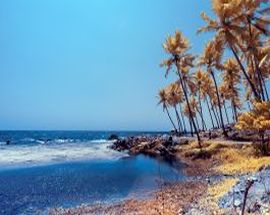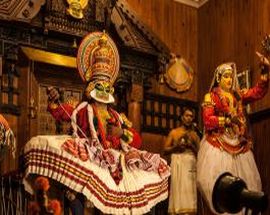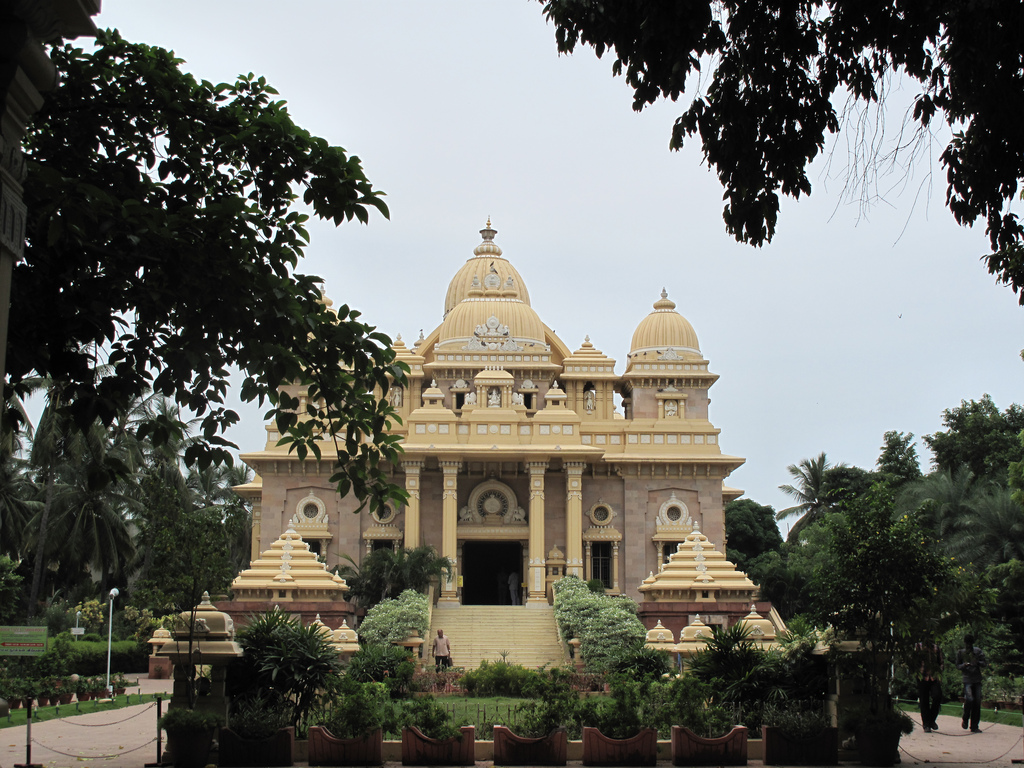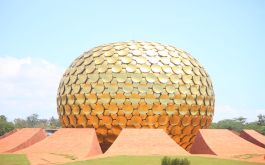As far as Tamil Nadu tourism is concerned, it is a perennial destination. You can see tourists flocking the diverse cities of the state all through the year, sometimes staying for a couple of days to staying through weeks to cover all the important places in Tamil Nadu. Having a tropical climate, Tamil Nadu has a comparatively consistent temperature levels throughout the year. Unlike other Indian cities where temperature fluctuations can be drastic and seasonal changes are evident, Tamil Nadu remains the same in terms of climate and weather conditions throughout the year.
The state receives rainfall from the northeast monsoon winds because the rains from the southeast monsoon winds are often blocked by the presence of the mighty Western Ghats. Most of the rains from this phenomenon hit the Western Ghats and fall in the states of Kerala and Karnataka, leaving a majority of the state of Tamil Nadu dry throughout the year. Agriculture is solely dependent on the occurrence of monsoon and the failure of it has been consequential to the fields. Due to this, the three climatic conditions in Tamil Nadu evident for tourists include the hot season, the hotter season and the hottest season.
Geographically, there are summers, the monsoon season and the winter. Though the seasonal changes are evident, the state remains dry and humid for the major portion of the year, with summers offering scorching heat to visitors and tourists. In several places Chennai, Tiruchirapalli, Vellore, Thanjavur and Madurai, the temperatures during the summer can go up to 45 degrees Celsius.
It is during this time that hill stations like the Nilgiris, Kodaikanal, Yercaud and others get visited by tourists from around the state. While the beaches remain busy all through the year, the influx of tourists in other important destinations in Tamil Nadu depends on the prevailing season.
To sum it up, the best time to visit Tamil Nadu is for sure during the winter season or during the end and beginning of the year, where the weather conditions are light and ideal for Tamil Nadu tourism. For a better understanding, here are the three seasons, their significance and details on why you should travel at that time.
Summers in Tamil Nadu
Summer starts in the month of March and lasts up to late June.
Temperature
During summers, temperatures range from 28 degrees Celsius to 45 degrees Celsius depending on the place you are visiting in Tamil Nadu.
Weather
This is the time the mercury levels are at an all-time high. The weather remains consistently hot and humid with zero moisture content. Even the breeze that are supposed to be pleasant and relieving end up being heat winds. It is only in the evenings that sea breeze begins to seep into the coastal areas providing some relief. In the landlocked areas, the temperature gradually comes down after sunset and makes it bearable.
Why you should visit now
Though hot, not all the places will make sweat through your holiday. The popular hill stations make summer the best season to visit Tamil Nadu, thanks to their chilly temperatures. Being a holiday season for schools and colleges, the hill stations act as the best weekend getaway for the residents of Tamil Nadu and there are tourist from all over South India dropping down to beat the heat. It’s the time the lakes in the hill stations look pristine and elegant, the views are good, the weather is perfect, most of the attractions are open, and shopping is completely active in these regions. Apart from hill stations, you can also visit cities towards the west of Tamil Nadu like Coimbatore, Salem and Theni.
Know Before your visit
If you are visiting the hill stations during this time, be prepared to stand in long queues to buy entry tickets and find a place for parking. It gets very crowded during the weekends especially. If your schedule includes the other places, make it a point to visit the cities first and then head to hill stations to feel relieved and not otherwise.
Tips
If you are visiting the other parts of Tamil Nadu besides the hills, remember to pack very, very light and carry t-shirts, shorts, sandals, deodorants, hats, sunglasses, sunscreens and adequate water at all times. Pack normally when visiting the mountains in Tamil Nadu. Pullovers, shawls, and mid-weight winter jackets should be fine.
Monsoon in Tamil Nadu
The monsoon season in Tamil Nadu starts from late June to December
Temperature
On an average monsoon day, the temperature can range anywhere between 25 and 30 degrees Celsius in Tamil Nadu.
Weather
The weather remains consistently pleasant during this time with not too much rainfall. There are mild showers during the late afternoons and early evenings generally and are short lasting. This is the perfect time to visit the hill stations again to catch them in their best forms after getting drenched in the northeast monsoon winds. The green landscapes appear drenched and kissed by the skies and create an atmosphere, which has to be experienced and soaked in personally. The months in the monsoon season are marked by alternate rains and moderate sunshine respectively.
Why you should visit now
This is the time the influx of tourist is comparatively less in most hill stations and you can see them in all their beauty during this time. Falls like Hogenakkal, Coutralam, Suluri, Monkey and Agaya Gangai are at their majestic best, with waters gushing and dropping over the rocks. An important festival in Velankanni to signify the nativity of Mary happens during this season during late August and early September. The festivities are extravagant with feasts and the Velankanni Church is as beautiful as it gets. There are really some amazing places to visit in Tamil Nadu, so make sure to check it out
Know before your visit
Though referred to as the monsoon season, rainfall in Tamil Nadu at this time is just moderate and to an extent, that it will not affect your holiday schedule. While there might be a delay for a few hours in reaching places, your vacation remains uninterrupted.
Tips
Carry an umbrella or a raincoat to tackle the rainfall. Also, carry light clothes for the daytime. Have mosquito repellants, sunglasses, power banks and flashlights. Try avoiding street food at this time because of the probable breakout of epidemics. The rains are short lived and viral.
Winter in Tamil Nadu
This is perhaps the best time to visit Tamil Nadu. Winter in Tamil Nadu begins in the month of November and extends until March, just before the onset of the summer season.
Temperature
The temperature in the state during this time ranges between 22 to 30 degrees Celsius.
Weather
The weather is not too hot nor too cold during winter. It is ideal for sightseeing and in such a way that you will not come back exhausted after a day of touring. You will feel pleasant during the daytime and more comfortable in the evenings.
Why you should visit now
This is the best season to visit Tamil Nadu, especially the cities you cannot visit during the summers. From UNESCO World Heritage Sites in Thanjavur and Mammallapuram to some of the hottest cities like Chennai, Tiruchirappalli, Madurai and more, you can visit all the cities leisurely and have a great holiday around this time. Besides, winter is also the time where several festivals and events happen all throughout the state. From Tamil New Year and Pongal to the world renowned Carnatic Music Festival or the Margazhi Maha Utsavam, this is the best time to be in Tamil Nadu.
Know before your visit
Despite being the best time to visit, hotels and accommodations remain comparatively nominal and fit your budget. This is not the peak season but still the season where you can witness the experiences of the peak season in a more sophisticated way. There is nothing much to think about tourism in Tamil Nadu during winters and you have to just pack your bags and come down.
Tips
Carry lightweight winter garments and mufflers for the early mornings and nights. Have adequate water all the time and carry sunscreen.
There are also amazing Tamil Nadu Tour Packages to choose from,here at Thomas Cook.You can also check out more ways on How to reach Tamil Nadu





